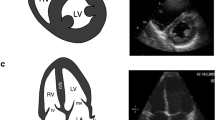Abstract
Background
In asymptomatic patients with penetrating thoracic trauma and a normal initial chest x-ray, successive prospective trials have decreased the minimum observation period required for exclusion of significant injury from 6 to 3 h. Despite the quality of these studies, this interval remains arbitrary and the true requisite observation time for safe discharge remains unknown. The current study evaluates the ability of “early” repeat chest x-ray, at intervals approaching 1 h, to exclude clinically significant injury.
Methods
Eighty-eight, asymptomatic patients with penetrating chest trauma and normal initial chest radiographs were prospectively enrolled in this study. All patients received an “early” follow-up chest x-ray, at a median interval of 1 h and 34 min (interquartile range: 1 h 35 min to 2 h 22 min), and a second repeat x-ray at a “delayed” interval no earlier than 3 h postadmission. Radiographic abnormalities in clinically stable patients were followed with serial examination and repeat imaging for a minimum of 6 h. All patients received both “early” and “delayed” repeat CXRs with no patient discharged before full assessment.
Results
One of the 88 patients with initially normal chest x-ray underwent tube thoracostomy at the discretion of the attending surgeon before any repeat imaging. Of the remaining patients, 4 of 87 (4.6 %) demonstrated radiographic abnormalities on “early” repeat imaging. Two patients had pneumothoraces, successfully managed without intervention; the remaining two demonstrated evidence of hemothorax, subsequently undergoing tube thoracostomy. Two more patients (2.3 %) developed pneumothoraces on “delayed” imaging, both successfully observed without intervention.
Conclusions
In asymptomatic patients with penetrating thoracic trauma and normal initial chest radiographs, “early” repeat chest x-ray, at intervals approaching 1 h, appears sufficient to exclude clinically significant pathology and to allow safe patient discharge.

Similar content being viewed by others
References
Hegarty MM (1976) A conservative approach to penetrating injuries of the chest: experience with 131 successive cases. Injury 8:53–59
McLatchie GR, Campbell C, Hutchison JS (1980) Pneumothorax of late onset after chest stabbings. Injury 11:331–335
Kerr TM, Sood R, Buckman RF, Gelman J, Grosh J (1989) Prospective trial of the six hour rule in stab wounds of the chest. Surg Gynecol Obstet 169:223–225
Kiev J, Kerstein MD (1992) Role of three hour roentgenogram of the chest in penetrating and nonpenetrating injuries of the chest. Surg Gynecol Obstet 175:249–253
Weigelt JA, Aurbakken CM, Meier DE, Thal ER (1982) Management of asymptomatic patients following stab wounds to the chest. J Trauma 22:291–294
Seamon MJ, Medina CR, Pieri PG et al (2008) Follow-up after asymptomatic penetrating thoracic injury: 3 hours is enough. J Trauma 65:549–553
Shatz DV, de la Pedraja J, Erbella J, Hameed M, Vail SJ (2001) Efficacy of follow-up evaluation in penetrating thoracic injuries: 3- vs. 6-hour radiographs of the chest. J Emerg Med 20:281–284
Muckart DJ (1985) Delayed pneumothorax and haemothorax following observation for stab wounds of the chest. Injury 16:247–248
Perlmutt LM, Braun SD, Newman GE, Oke EJ, Dunnick NR (1986) Timing of chest film follow-up after transthoracic needle aspiration. AJR Am J Roentgenol 146:1049–1050
Derlet R, Richards J, Kravitz R (2001) Frequent overcrowding in U.S. emergency departments. Acad Emerg Med 8:151–155
Henneman PL, Nathanson BH, Li H et al (2010) Emergency department patients who stay more than 6 hours contribute to crowding. J Emerg Med 39:105–112
Ball CG, Dente CJ, Kirkpatrick AW et al (2010) Occult pneumothoraces in patients with penetrating trauma: does mechanism matter? Can J Surg 53:251–255
Varin DSE, Ringburg AN, van Lieshout EMM, Patka P, Schipper IB (2009) Accuracy of conventional imaging of penetrating torso injuries in the trauma resuscitation room. Eur J Emerg Med 16:305–311
Zehtabchi S, Morley EJ, Sajed D, Greenberg O, Sinert R (2009) Delayed pneumothorax after stab wound to thorax and upper abdomen: truth or myth? Injury 40:40–43
Magnotti LJ, Weinberg JA, Schroeppel TJ et al (2007) Initial chest CT obviates the need for repeat chest radiograph after penetrating thoracic trauma. Am Surg 73:569–572 Discussion 572–573
Author information
Authors and Affiliations
Corresponding author
Rights and permissions
About this article
Cite this article
Berg, R.J., Inaba, K., Recinos, G. et al. Prospective Evaluation of Early Follow-up Chest Radiography after Penetrating Thoracic Injury. World J Surg 37, 1286–1290 (2013). https://doi.org/10.1007/s00268-013-2002-0
Published:
Issue Date:
DOI: https://doi.org/10.1007/s00268-013-2002-0




